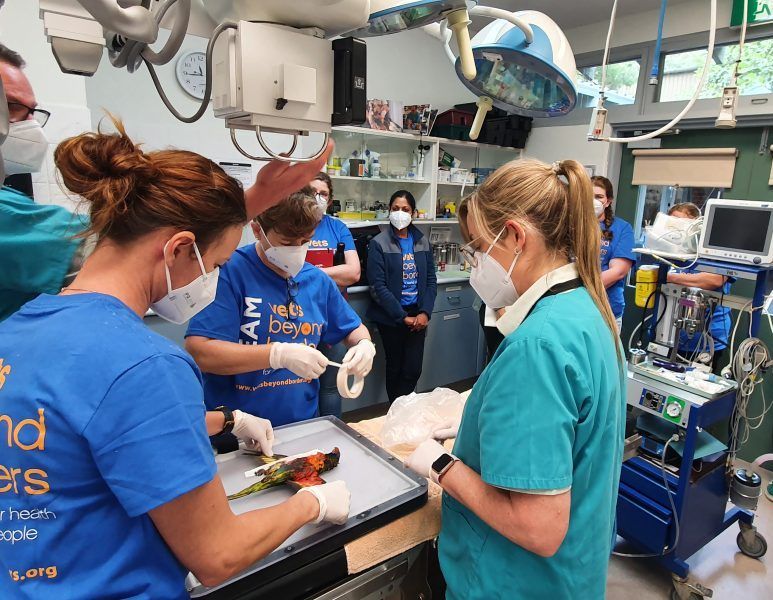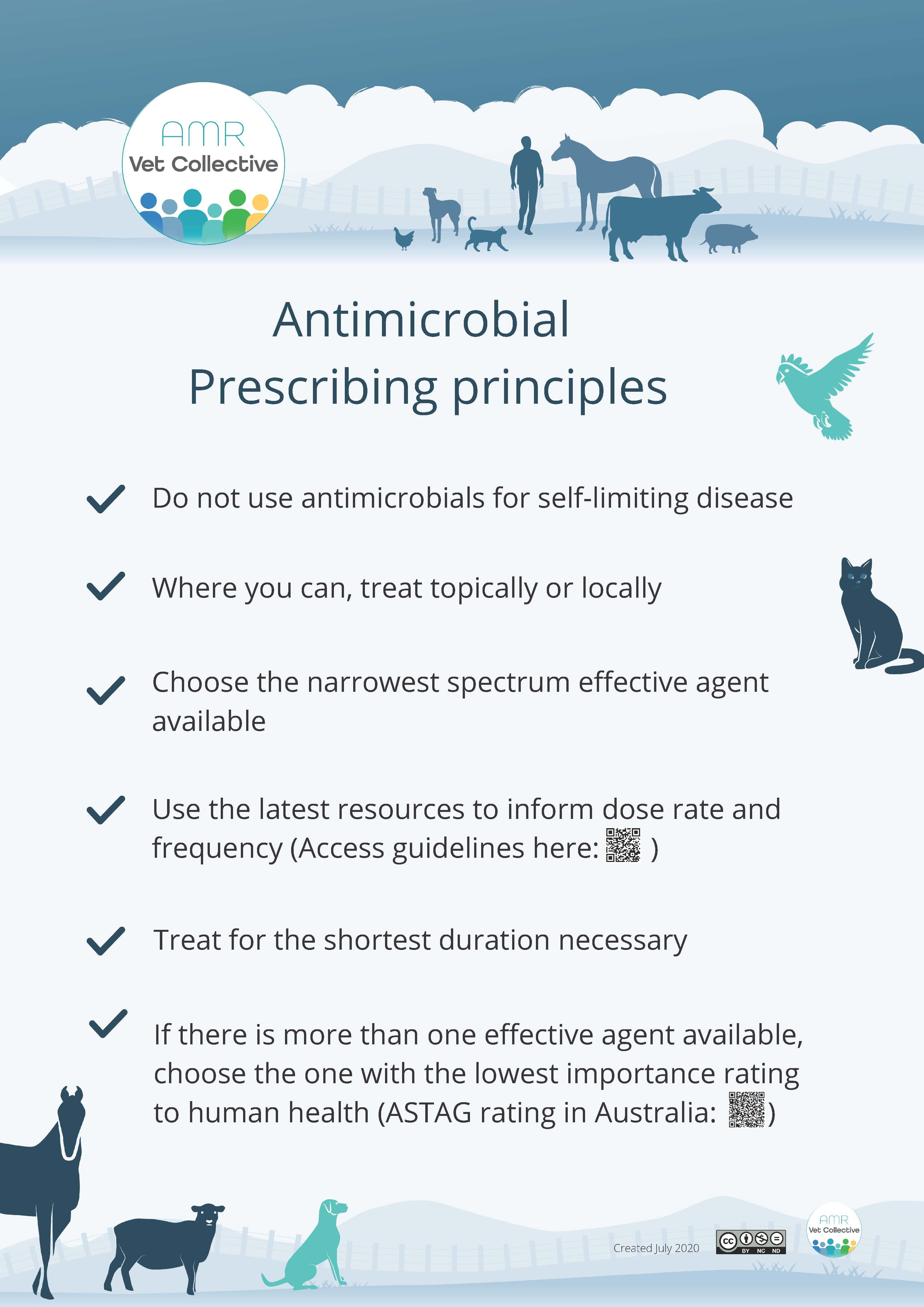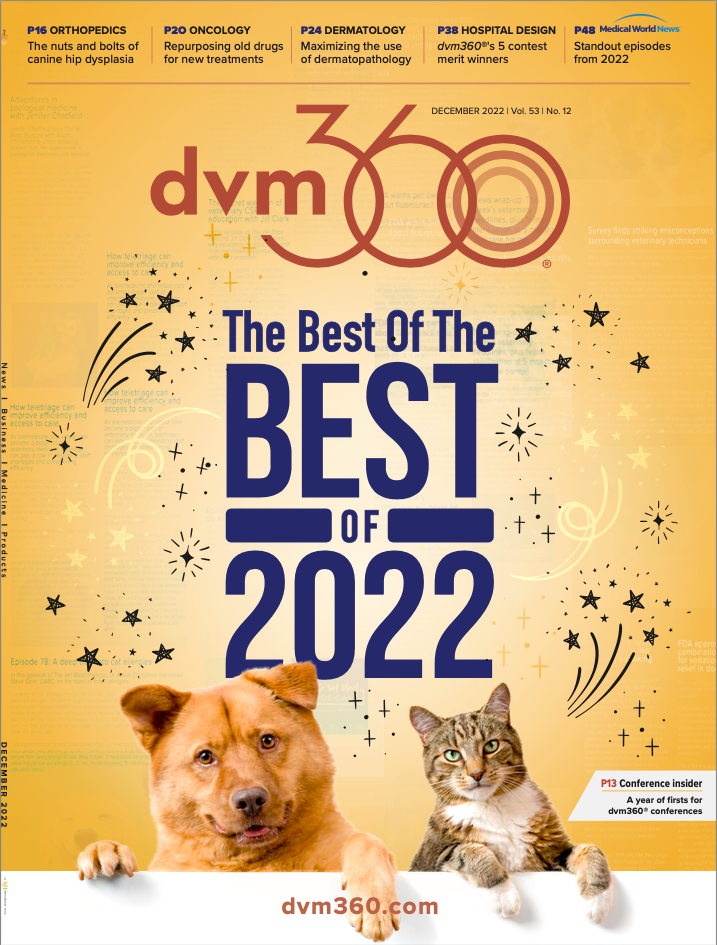Veterinary scene Down Under: Wildlife care everywhere, plus AMR Vet Collective
Updates on initiative to increase veterinary capability to help wildlife in natural disasters, and online portal encouraging practice of good antimicrobial stewardship
Wildlife Care Everywhere
Vets Beyond Borders Veterinary wildlife training at Taronga Zoo (Photo courtesy of Vets Beyond Borders).

Vets Beyond Borders (VBB), an Australian not-for-profit charity focused on helping animals and communities, has partnered with WWF-Australia to deliver Wildlife Care Everywhere, a wildlife training and resource package for veterinary clinics in regions of need across Australia. The project aims to prepare veterinary professionals in the capture, treatment, and care of wildlife during events caused by extreme weather, such as bushfires.
The initiative comprises 5 different components to upskill veterinarians by providing them with additional training and equipment for essential veterinary care for wildlife. The first component is wildlife treatment and care training for veterinary professionals delivered by the Taronga Conservation Society Australia, who have also partnered with other regional zoos and wildlife sanctuaries for the practical training aspects of the blended online and in-person course.
The second component of Wildlife Care Everywhere is training in the basic principles of the Australasian Inter-Service Incident Management System (AIIMS). This training aims to increase participants’ awareness about emergency management procedures so that veterinarians and veterinary nurses understand how they fit into the framework of a coordinated response, managed by state government authorities.
The third and fourth parts of Wildlife Care Everywhere are darting and wildlife capture management. “VBB is providing specific training for 60 veterinarians across Australia to be licensed to use dart equipment, and we have funding for 20 darting tranquilizer rifles and storage safes across Australia. We’re trying to complement what already exists, so we’ve identified gaps across the country where these will be located,” VBB Chief Executive Officer Sally Colgan, BVSc, explained to dvm360®.
“The final component of the program is a mobile triage unit fully equipped with veterinary equipment, consumables, and temporary animal housing to create a simple pop-up wildlife triage center, which will be able to be used by our volunteers and partnered response agencies.”
Colgan sees the Wildlife Care Everywhere initiative as an important part of improvements being rolled out by different wildlife and veterinary groups across Australia. These are intended to boost veterinary wildlife emergency response capacity and capability.
“This initiative is part of a game-changing process which is happening. With assistance from WWF-Australia, we’re putting 100 vets through the Taronga training course. But is 100 vets across Australia enough? I don’t think so, but it is important to increase the number of veterinarians and vet nurses who are wildlife capable and wildlife aware and ready to assist. We’re trying to create a cohort of vets who are trained and willing to be deployed and assist as volunteers when needed,” said Colgan.
For further information on the VBB Wildlife Care Everywhere initiative, visit: https://vetsbeyondborders.org/news/wildlife-care-everywhere
AMR Vet Collective
AMR Vet Collective Prescribing Principles (Photo courtesy of AMVR Vet Collective).

The AMR Vet Collective is a community of veterinarians, researchers, and academics who came together to support best practices in relation to preventing antimicrobial resistance. The group has sourced and curated a selection of online resources and training modules encouraging good antimicrobial stewardship.
“The term ‘antimicrobial stewardship’ is not commonly used in daily language. The idea behind it is a lovely one––that some are responsible for the caretaking of a resource that is of benefit to all. We can liken it to being a custodian, and that is perhaps a term that people are more familiar with,” explained Jacqueline Norris, PhD, MVS (Melb), BVSc (Hons), a professor of veterinary microbiology and infectious diseases at the University of Sydney, and one of the experts behind the development of the AMR Vet Collective.
“We know that some people tune out at the mention of stewardship or assume that being ‘good’ at stewardship is about being a master pharmacologist or internal medicine specialist. Part of what we want to do is to empower those people who are leaders or who want to be leaders in antimicrobial stewardship––but we also know that this isn’t for everyone. One of our core messages is that it doesn’t have to be that hard! We all have the capacity to reduce selection pressure and minimize antimicrobial resistance.”
AMR Vet Collective’s aim is to translate the science, share stories, and connect veterinarians with high-quality antimicrobial stewardship resources sourced globally and created locally. The organization’s website provides a one-stop-shop for resources suitable for veterinary clinics and for use with animal owners to help educate them about antimicrobial resistance––a handy resource as World Antimicrobial Awareness Week, November 18 to 24, approaches.
The collective’s associated Online Vet AMS Course was created by veterinarians and academics from all the Australian and New Zealand veterinary schools. It includes modules covering the core concepts in antimicrobial resistance, antibiotic prescribing and the microbiome, infection prevention and control, and putting the theory into practice––implementing an antimicrobial stewardship program.
“So please jump onboard, ‘like’ and ‘follow’ our social media accounts, have a listen to our podcast, take a look around the website, and sign up to the free online learning program. We all need to work together to protect our antimicrobials. Antimicrobial stewardship is a team sport, and you are a key player,” said Norris.
Visit the AMR Vet Collective at: https://www.amrvetcollective.com
